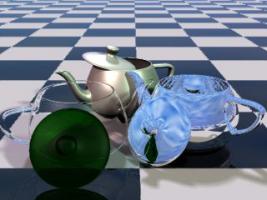All Activity
- Past hour
-
Yes it can be done. Depends on the material which once work. Some are pretty toxic so, but it depends. But you can easily go smaller than 0.1mm (100 microns) with a resin printer... If you go with 10-50 microns (depends on the printer if you can) you will likely do no longer see the rings with bare eyes. Best regards *Fuchur*
-
Hi Tom, There has to be continuous support from the "build plate" to any object that is not sitting on the build plate. Fortunately "slicer" programs can automate the placement of those supports. The supports are snapped off when the print is done. In practice the build plate is above the resin vat and lifted as layers are added the models can be rotated to manage where the supports are placed. A problem with a sphere or cube (for resin printing) is that they are solid enclosed shapes; uncurable resin will be trapped inside if no holes are added for it to drain out. I've read that the ideal resin surface should be 5mm or less.
- Today
-
Cool!!....resin printing is a bit tricky with all the chemicals but if anyone can do it right...it is Rob! My local public library has a 3d printer that I have used for simple printing dice.however I want to print some more complicated things which brings up a question. What happens when you have a 3d model sitting on top of (but not connected to) another 3D object (see attached). It is a sphere just sitting on top of a cube. If that is exported as an STL file, will it print it like a sphere on top of the cube or will the fact that they are not connected with splines confuse the printing software? Thanks for any clarifications! Tom
-
True. Looking at the first 3 photos, the model looks pretty smooth. You can really only see the lines when you are zoomed way in.
-
Maybe. But the last thing I need is more chemicals for this.
-
APNG or maybe WEBP (haven't tried that format) work with transparency, so depending on where it's going to be used/viewed, might be options.
-
Is there any kind of chemical treatment that can eliminate or reduce the lines? You probably can't really see it unless you are right up on it, though.
-
Layer lines can be observed on shallow slopes. These are 0.1mm layers. I think they can be made smaller in exchange for longer printing time. The 3D print is pretty good but consider that the penny has finer details than this 3D print could show.
-
Does the background need to be transparent? Can it be a patch that is background-colored? GIF only supports all-or-nothing transparency so a partial transparency effect like the lens flare, that partially colors whatever it overlaps, is not possible in GIF.
-
Found the camera settings, but also found that the lens flare on a transparant background gets lost....
-
Would there be an easy path to render this with a transparant background to be used as a gif I wonder?
-
Yes, I still have contest medals to make!
-
Cool! Are you planning any special projects with it?
-
I got a 3D resin printer. My first print is the teapot from the Three Teapots Benchmark As it is printed on the build plate. This took one hour to print. At this scale the walls are paper thin. After curing and removing the supports:
- Last week
-
works like a charm flare_test.avi
-
Robert, thanks for the tips. I knew if I came out to the forum, the A:M AI would kick in and provide a solution, When the demo reel is done I will share it here
-
Hi Paul, Good looking logo! Put the light in the scene where you want the flare to appear, pointing to the camera. I have put it slightly in front of the logo so it won't illuminate the logo. "Lens Flare" must be turned on in the original copy of the light in the objects folder, but the parameters can be set and animated in the Chor. demo1x.prj
-
here's a quick render so far and the project file logo.avi demo1.prj
-
Well I'm back again. I've been coding like a mad man on my startup company and am finally on the downslope side of development. So now it is time to start turning my attention to promotion. For that I am working on a quick video meant to be a teaser of the company and product. The final scene is the logo (attached) which of course was modeled in AM. What I envisioned is the model on a black background, say 2 seconds, ending with a lens flare, or some sort of flash from the top right edge of the sun. I tried with simply lights, and couldn't get what I was looking for. Anyone have ideas on how to pull this off? solus_logo.mdl
-

Free Harvard CS50 Intro to Computer Science course
robcat2075 replied to Rodney's topic in C++ Learners
This worked to get Python into Visual Studio (so far). -
When people say they have trouble rigging what they usually mean is they have trouble CP weighting and/or smartskinning. TSM2 doesn't change that much. However it is the only rig I want to use. I prefer its installation workflow and I prefer animating with it. In the second post above, i directed Edward to a page to get TSM2, which also has two videos that show me going through the whole TSM2 process. I recommend watching those. One of them is about CP weighting.
-
Does it help make rigging easier?
-
No, TSM2 is about rigging models, not about the multiple rotoscopes.
-
Today at Live Answer Time we experimented with the Extruder Wizard and watched Felix the Cat in "Astronomeus"
























